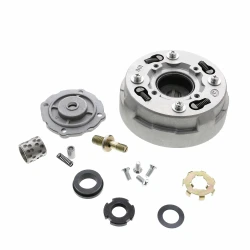Aspects of motorcycle engines
2023-11-24
The motorcycle engine is the powerplant that generates the mechanical energy needed to propel the bike. Motorcycle engines come in various types, configurations, and sizes, catering to different riding styles and preferences. Here are some key aspects of motorcycle engines:
1. Types of Motorcycle Engines:
- Single-Cylinder: These engines have one cylinder and piston. They are common in smaller, lightweight motorcycles and dirt bikes.
- Parallel-Twin: This configuration consists of two cylinders arranged in parallel. It's popular in a variety of motorcycles, including standard and some entry-level sport bikes.
- V-Twin: In a V-Twin engine, two cylinders are arranged in a V-shape. This configuration is often associated with cruiser motorcycles and some performance-oriented bikes.
- Inline-Three: Three cylinders arranged in a line. This configuration is found in some sport bikes, providing a good balance between power and smoothness.
- Inline-Four: Four cylinders in a line. Common in sport bikes and many standard motorcycles, offering a combination of power and smooth operation.
- Boxer Engine: Cylinders are horizontally opposed, with a flat configuration. This design is used by BMW motorcycles and provides a lower center of gravity.
- V-Four: Four cylinders arranged in a V-shape. This configuration is found in some high-performance and sport-touring motorcycles.
2. Engine Capacity (Displacement):
- Engine capacity is measured in cubic centimeters (cc) or liters and represents the total volume of all cylinders. Common engine sizes range from small, such as 125cc, to large, such as 1,000cc and above.
3. Engine Components:
- Cylinder: The main chamber where combustion takes place. The number of cylinders determines the engine's configuration.
- Piston: Moves up and down within the cylinder, converting the energy generated by combustion into mechanical motion.
- Crankshaft: Converts the linear motion of the pistons into rotational motion, transmitting power to the motorcycle's transmission.
- Camshaft: Controls the opening and closing of the engine's valves, determining the timing of the combustion cycle.
- Valves: Allow air and fuel into the combustion chamber and exhaust gases out.
4. Fuel System:
- Carburetor or Fuel Injection: Older motorcycles may use carburetors to mix air and fuel, while modern bikes typically use fuel injection for more precise fuel delivery.
5. Ignition System:
- Spark Plugs: Produce sparks to ignite the air-fuel mixture in the combustion chamber.
6. Cooling System:
- Air-Cooled or Liquid-Cooled: Some engines are air-cooled, relying on air circulation to dissipate heat, while others use a liquid cooling system with a radiator and coolant.
7. Exhaust System:
- Exhaust Pipes and Mufflers: Guide and expel the exhaust gases produced during combustion.
Understanding your motorcycle's engine type and its components is essential for proper maintenance, troubleshooting, and optimizing performance. Regular maintenance, including oil changes, air filter replacements, and valve adjustments, is crucial to ensure the engine's longevity and reliability.



